Observation and Measurement of Electric Vehicle (EV) Components Using Digital Microscopes
Electric vehicles (EVs), which emit no greenhouse gases, are drawing attention as part of creating a carbon neutral society. This section introduces observation and measurement examples of in-vehicle motors and parts related to engine control units (ECUs) or invertors, which are key parts of EVs, using digital microscopes.

- Characteristics of EVs
- In-vehicle Motor Structure
- Types of Permanent Magnets
- Stator Structure
- ECUs and Inverters
- Observation and Measurement of EV Components Using Digital Microscopes
Characteristics of EVs
- Eco-friendly because EVs do not emit greenhouse gases.
- Low fuel (electricity) costs for travel distances
- High acceleration performance
- Small number of parts
- Easy maintenance
In-vehicle Motor Structure
Brushless alternating-current (AC) motors are mounted on EVs. There is no brush, which reduces noise and simplifies maintenance.
- Rotor
- This is an output shaft that drives wheels via a reducer. Permanent magnets are used.
- Stator
- This part generates force for rotating a rotor. It passes electricity through the stator coil according to the rotor rotation.
- Rotor rotation position sensor
- This sensor detects the rotor rotation position to pass alternating current that corresponds to the rotor rotation speed through the stator coil.

- A: Rotor
- B: Stator coil
- C: Stator
- D: Rotor rotation position sensors
Types of Permanent Magnets
- Ferrite magnet
- Ferrite magnets are cheap and easy to form. They are used for in-vehicle DC motors.
- Neodymium magnet
- Neodymium magnets have magnetic energy that is at least 10 times that of ferrite magnets and are used for EV driving motors. Neodymium magnets are expensive because rare earths are used in their construction. Neodymium magnets are hard but have the drawback that they are sensitive to heat and prone to rust.
Stator Structure
A stator has layers of electromagnetic steel sheets each with a thickness of 0.3 to 0.5 mm.
Electromagnetic steel sheets made from soft magnetic materials are used because magnetic poles need to be reversed instantaneously. The thinner the electromagnetic steel sheets are, the more eddy current can be suppressed in the electromagnetic steel sheets. (Smaller energy losses) Additionally, eddy current losses can be reduced by coating sheet surfaces to insulate them from each other.

ECUs and Inverters
ECUs and inverters used for EVs have the following characteristics.
- ECU
- ECUs control the electricity that passes through stator coils by calculating the optimal number of rotations and torque. The number of rotations is controlled using the frequency and the torque is controlled using the current.
- Inverter
- Inverters are components that convert direct current supplied from batteries into alternating current. Inverters not only convert direct current into alternating current but also adjust the frequency and the amount of current during conversion to control the number of rotations and torque of motors.
Observation and Measurement of EV Components Using Digital Microscopes
These are the latest examples of observation and measurement of EV components using KEYENCE’s VHX Series 4K Digital Microscope.

Using the depth composition function allows for observation with images where the entire screen is in focus, even at high magnifications.
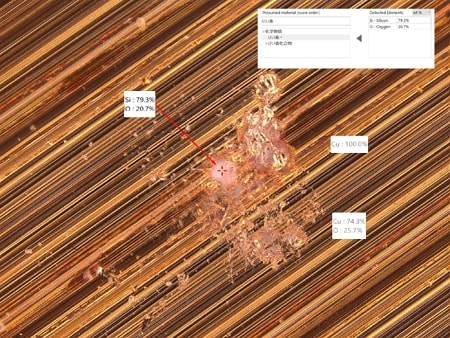
EA-300, 300×, ring illumination
Quick analysis can be performed on-site to determine whether observed targets are foreign particles in the container or dust.


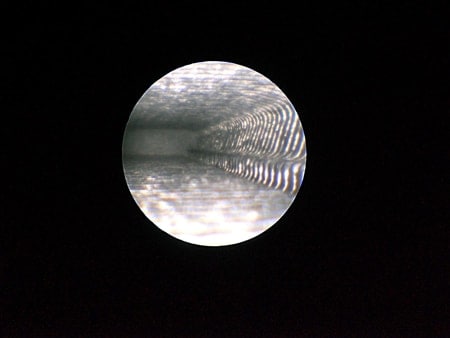
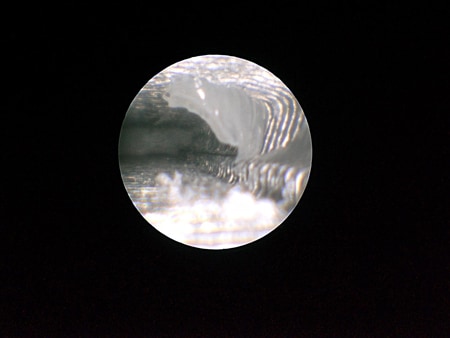
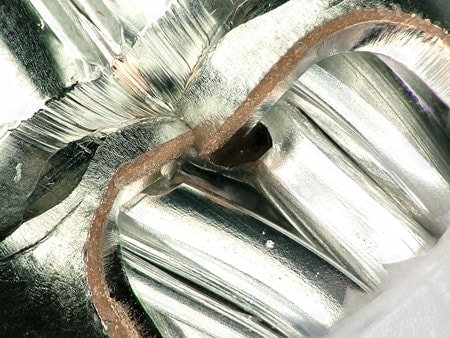

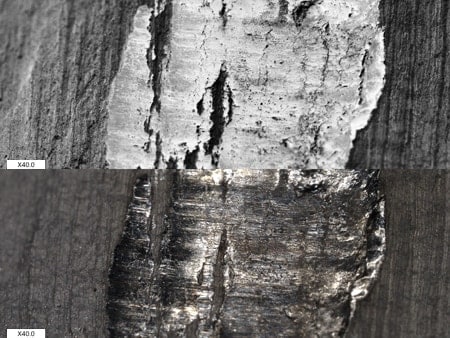
VHX-E20 40×, upper: Optical Shadow Effect mode image, lower: normal image
Optical Shadow Effect mode can visualise surface irregularities.


